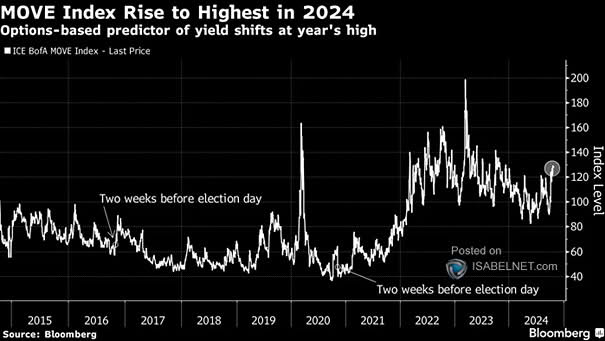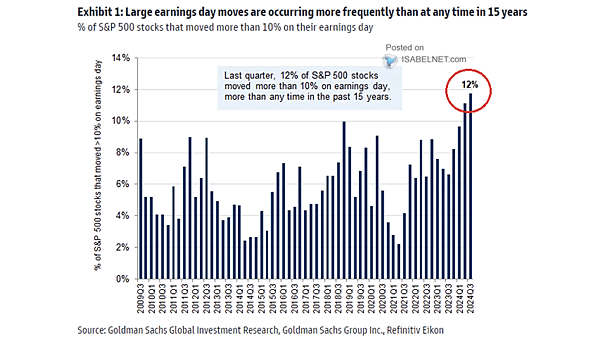MOVE – U.S. Treasury Volatility Index
MOVE – U.S. Treasury Volatility Index The MOVE index, which measures implied volatility in U.S. Treasury options, has surged to its highest level since January 2024, signaling potential shifts in broader financial markets. Image: Bloomberg


